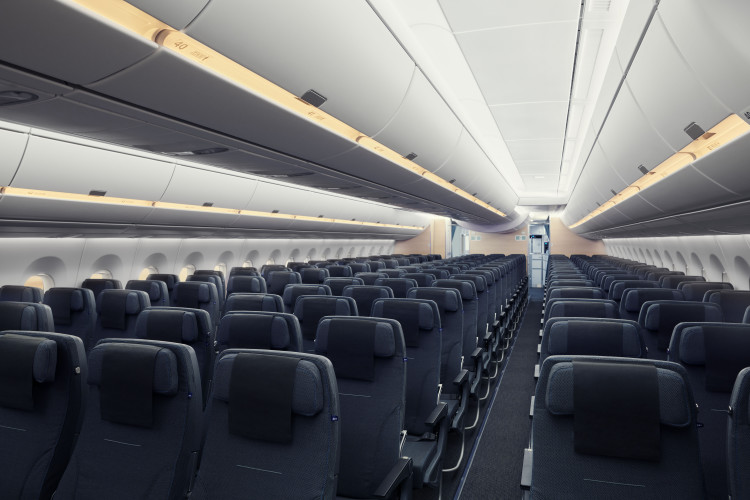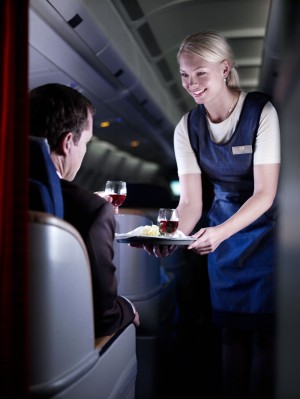All of Norway’s airines are bracing for a rough winter season, and in some cases just hoping to stay aloft. While upstart Flyr has been scrambling to recapitalize, veteran SAS remains caught in a crisis that will worsen if it fails to avert another strike by flight attendants who complain they’re overworked and underpaid.

Scores of frustrated SAS flight attendants have already quit, with one telling state broadcaster NRK this week that she’ll earn much more money in her new job as a tram driver in Oslo than as a flight attendant working 47.5 hours a week for SAS. She’s been earning NOK 320,000 a year (just over USD 30,000) at SAS. That will rise to NOK 470,000 at Oslo’s public transit agency.
After months of delays followed by the last two months of unsuccessful negotiations between flight attendants in Norway and SAS, the two sides went into voluntary meetings with a state mediator on Thursday. If mediation fails, they’re still threatening to walk off the job just like SAS pilots did in June. The flight attendants claim their current top pay of NOK 36,826 a month (USD 40,000 a year) is lower now than it was in 2012. They’re demanding raises of at least 3.7 percent but also believe, as did SAS’ pilots, that principles are also at stake, not just pay.

SAS, meanwhile, wants flight attendants to be able to work as many as 60 hours a week and a maximum of 190 hours per month, and be available 24 hours a day if they’re on “stand by.” The airline’s management also stresses that SAS is in deep financial trouble after the pilots’ strike finally ended, with losses totalling more than half-a-billion Swedish kroner in September alone and SEK 7.1 billion during the nine months from November 1, 2021 through September 30.
The airline also remains in bankruptcy proceedings in the US, has been ordered to pay fines for failing to reimburse passengers affected by the pilots’ strike, and has dropped around 1,700 departures this fall. The new cancellations are the result of delayed delivery of new aircraft, staffing shortages and changes in the passenger market. Business travel hasn’t returned to pre-pandemic levels, inflation is taking a toll and leisure travel has been affected by everything from economic concerns to the security situation in Europe after Russia invaded Ukraine.
Those issues are affecting other airlines in Norway, too, that also are suffering from high fuel costs, a weak krone and economic uncertainty. Short-haul carrier Widerøe reported last week that it expects “a difficult winter” in a market “plagued by unpredictability.”
The new Oslo-based airline Flyr, meanwhile, has become popular with travelers but has burned through most of the capital put up by initial investors led by the heir to the former SAS rival Braathens SAFE. The airline managed to meet a new deadline for NOK 400 million in new capital this week, but the situation prompted Norway’s consumer council to adviser travelers to “consider other airlines” if they planned trips to southern Europe with Flyr since it’s been facing bankruptcy, too. It has cut routes, laid off half of its roughly 300 employees and is concentrating only on the most popular routes from Norway to southern Europe this winter.

Another upstart airline, the intercontinental Norse Atlantic, has also been worried about “a rough winter” as both its cash holdings and share price tumbled this fall. It just started flying between Europe and the US this past summer, with a fleet of Boeing 787 Dreamliner aircraft it took over from Norwegian Air after it went into bankruptcy reorganization. It’s been five months since Norse Atlantic’s first flight from Oslo to New York and management claims to be “reasonbly satisfied” with load factors of around 80 percent in June and July. Newspaper Dagens Næringsliv (DN) reported that fell to 69 percent in August and the airline dropped planned expansion beyond some new flights from Berlin, Oslo and Oslo via London to the US.
“I think passengers both in Norway, Europe and the US have become more uncertain as a result of higher prices, more expensive energy costs and higher interest rates,” Norse Atlantic’s CEO Bjørn Tore Larsen told DN. Such caution affects demand, but Larsen still expects Norse Atlantic (which only pays leasing rates on its aircraft when they’re in use) to be profitable in 2023.
Only Norwegian Air seems to have emerged from the Corona disruption and its own financial crisis and bankruptcy before the pandemic even began. It reported that it carried nearly 2 million passengers for the third month in a row in October, and recently reported third-quarter results showing revenues of NOK 7.1 billion and an operating profit of around a billion kroner. The quarter reflected the traditionally busy summer season during which arch-rival SAS’ pilots were also on strike, but CEO Geir Karlsen was pleased by the sheer traffic numbers. Fully 86 percent of Norwegian Air’s seats were also filled in October.
The Oslo-based airline which had to drop its troubled intercontinental service and “return to its roots” as a domestic carrier also serving Europe could thus celebrate its 20th birthday this fall. Even though passenger numbers have risen, though, they’re still much lower than pre-Corona numbers in 2019. The airline is also still in political trouble over controversial bonuses paid to top executives in the spring of 2021, after taxpayers had helped subsidize the airline during the Corona crisis.
All of Norway’s airlines have also seen their share prices fall this autumn and uncertainty plagues the travel and tourism industry. Lots of people were eager to fly off on holidays last summer but normalcy has not returned. “People have grown used to work via Teams and have digital conferences,” travel researcher Veronica Blumenthal recently told newspaper Dagsavisen. The closure of Russian air space has also made it more difficult and expensive to travel to Asian destinations, which had become popular with Norwegian tourists in addition to those traveling on business.
There’s no longer a major reason to travel for work, Blumenthal said, while climate consciousness has also risen and many Norwegians have reverted to shorter trips within Norway. “The question is whether travel habits have changed,” she added, and whether airlines can adjust and survive.
NewsinEnglish.no/Nina Berglund

